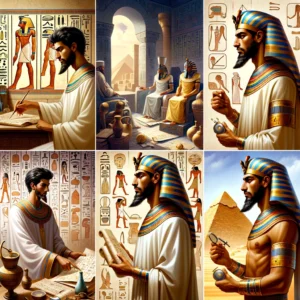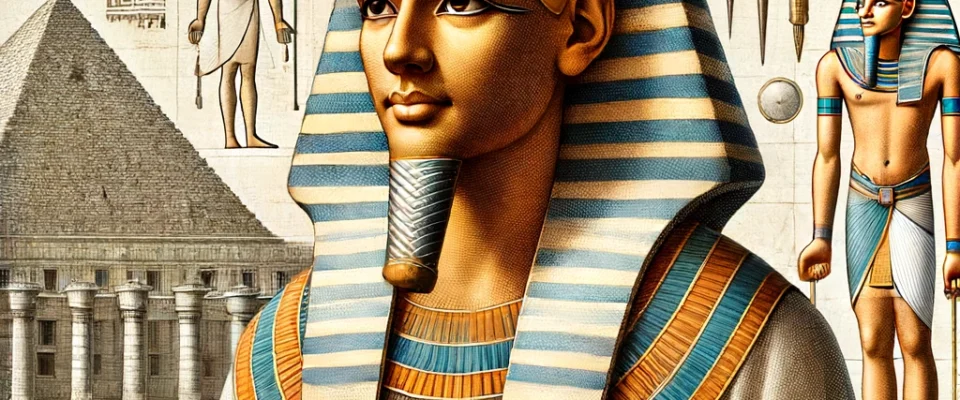Imhotep is a renowned historical figure from ancient Egypt who was later venerated as a deity in this civilization. He is best known for his roles as an architect, physician, and scholar. Here are some detailed facts about Imhotep:
- Origins and Family:
- Imhotep lived around the 27th century BCE, during the Third Dynasty of ancient Egypt.
- He served under the reign of Pharaoh Djoser.
- Roles and Achievements:
- Architect: Imhotep is considered the first great architect in human history. He is most famous for designing and constructing the Step Pyramid at Saqqara, which is regarded as the first pyramid and one of the most remarkable architectural achievements of ancient Egypt.
- Medicine: Imhotep is considered one of the first physicians in history. He wrote many medical texts and was revered as a god of healing after his death. During the Hellenistic period, he was identified with the Greek god of medicine, Asclepius.
- Scholar: Imhotep was also considered a scholar and philosopher, with extensive knowledge in various fields such as astronomy, mathematics, and literature.

- Worship and Legacy:
- After his death, Imhotep was worshipped as a deity and venerated in many temples across Egypt.
- He was considered the patron god of medicine and architecture. Numerous temples and hospitals were built in his honor.
- Later Egyptian medical texts often credited Imhotep as the originator and inspiration for many healing practices.
- Influence and Reverence:
- Imhotep was revered not only in Egypt but also in ancient Greece and Rome. The Greeks identified him with their god of medicine, Asclepius.
- He is seen as a symbol of wisdom and knowledge, and his legacy has had a profound impact on medicine and architecture through the centuries.
Imhotep is one of the most important and multi-talented historical figures of ancient Egypt. His career and legacy have left an indelible mark not only on Egyptian civilization but also on human history in general, particularly in the fields of medicine and architecture.

